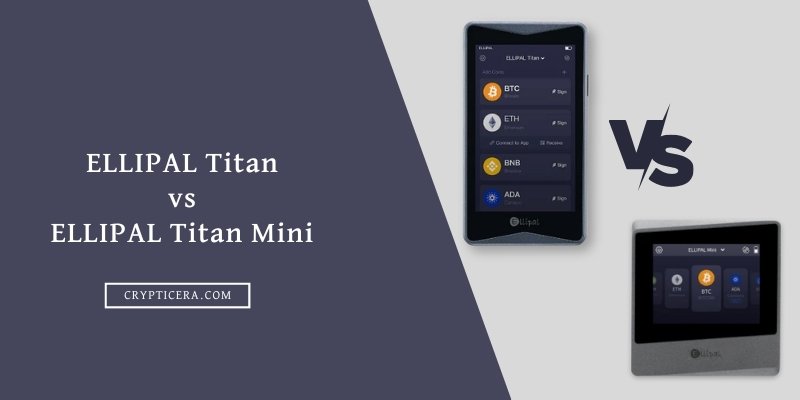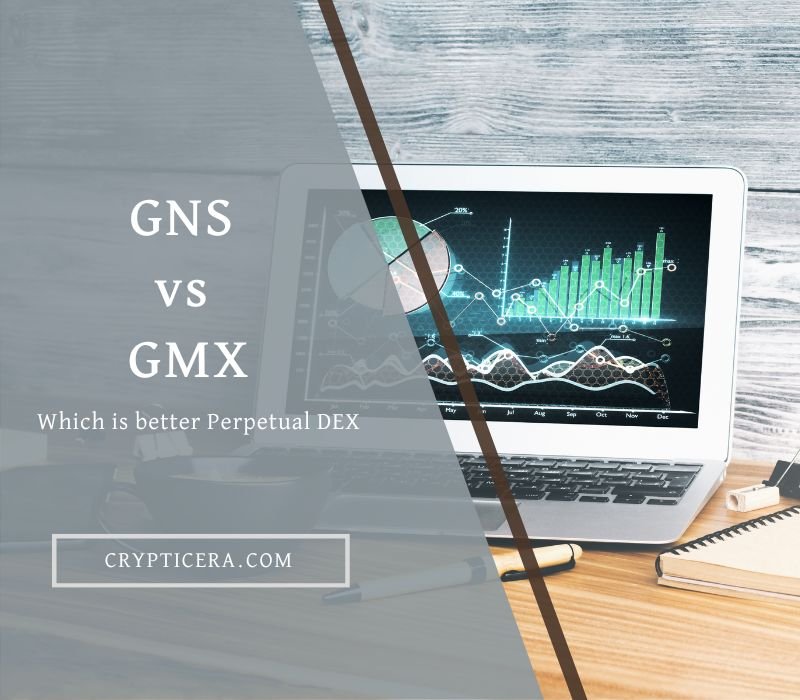Cryptocurrency is a digital asset that operates independently of a central bank. Transactions are secured using cryptography and are recorded on a public digital ledger known as a blockchain.
Bitcoin was the first cryptocurrency, introduced in 2009, and has since paved the way for thousands of other cryptocurrencies, including Altcoins and Stablecoins.
But how do they differ? This article will explore the differences between “Bitcoin vs Altcoins vs Stablecoins” and provide insight into the pros and cons of each.
Bitcoin vs Altcoins vs Stablecoins: Comparison
| Key Points | Bitcoin (BTC) | Altcoins | Stablecoins |
|---|---|---|---|
| Type | First and most well-known cryptocurrency | All cryptocurrencies except Bitcoin | Cryptocurrencies designed to maintain a stable value |
| Market Capitalization | $530 billion | $600 billion | $131 million |
| Volatility | Low volatile | High Volatile | Zero Volatility |
| Use Case | Store of value, digital gold | DApps, DeFi, Gaming, etc. | hedge against crypto market volatility |
| Transaction Speed | 7TPS, 10 min block time | 15 TPS – 100,000 TPS | faster than Bitcoin |
| Transaction Fees | $0.5 – $3 | Varies greatly depending on the specific altcoin, generally lower than Bitcoin | lower than Bitcoin |
| Mining Algorithm | SHA-256 (PoW) | Ethash (PoW), XRP Ledger Consensus (unique consensus), Scrypt (PoW), and others | N/A |
| Consensus Mechanism | PoW | PoS, PoW, BFT, DPoS, etc. | Generally PoS |
| Examples | Bitcoin (BTC) | Ethereum (ETH), Ripple (XRP), Litecoin (LTC) | Tether (USDT), USD Coin (USDC), Dai (DAI) |
What is Bitcoin (BTC)?

Bitcoin is the original cryptocurrency, created by an unknown person or group using the pseudonym Satoshi Nakamoto. It operates on a decentralized network, meaning it is not controlled by any government or financial institution.
Bitcoin transactions are verified by a network of nodes, and records of those transactions are stored on a blockchain.
It has several advantages over traditional payment systems. It allows for fast and cheap transactions, eliminates the need for intermediaries, and provides users with greater privacy and control over their money.
However, Bitcoin is also subject to high volatility, meaning that its value can fluctuate rapidly and unpredictably. This volatility can make it a speculative investment and is a major factor in its adoption as a currency.
Read: Bitcoin and its working: The Beginner’s Guide
What are Altcoins?

Altcoins are cryptocurrencies that were created after Bitcoin. They are often designed to address some of the limitations of Bitcoin, such as scalability and speed.
Some Altcoins use different consensus algorithms, such as proof-of-stake, instead of the energy-intensive proof-of-work algorithm used by Bitcoin. Altcoins can also have different features, such as the ability to execute smart contracts or provide privacy-enhancing features.
There are many different types of Altcoins, each with its own unique features and use cases. Some of the most popular Altcoins include Ethereum, Ripple, and Litecoin.
What are Stablecoins?

Stablecoins are a type of cryptocurrency that is designed to provide a stable store of value. They are often pegged to a fiat currency, such as the US dollar, or a commodity like gold. This pegging provides stability to the value of the coin, making it less volatile than other cryptocurrencies.
Stablecoins can be used for a variety of purposes, such as making purchases, remittances, or as a stable investment. They can also provide a hedge against volatility in other cryptocurrencies or traditional financial markets.
There are several types of Stablecoins, each with its own design and pegging mechanism. Some Stablecoins are backed by actual reserves of the underlying asset, such as fiat currency or gold, while others use algorithms or smart contracts to maintain the peg.
Examples of Stablecoins include Tether, USD Coin, and Binance USD.
Bitcoin vs Altcoin vs Stablecoin: How they Differ?
Purpose and Design:
Bitcoin was designed as a decentralized, peer-to-peer payment system, while Altcoins were created to address some of the limitations of Bitcoin, such as scalability and transaction speed. Stablecoins were designed as a way to provide a stable store of value and reduce volatility.
Market Capitalization:
Bitcoin has the largest market cap of any cryptocurrency, making up around 40% of the entire cryptocurrency market. Altcoins make up the remaining 60%, with Stablecoins accounting for a relatively small percentage.
Note: Stabelcoins are Altcoins but Altcoins are not Stablecoins
Key Differences Between Bitcoin, Altcoins, and Stablecoins
1. Volatility
One of the key differences between Bitcoin, Altcoins, and Stablecoins is their volatility. Bitcoin and Altcoins are known for their high volatility, with prices often experiencing rapid and significant fluctuations within short periods of time.
On the other hand, Stablecoins are designed to be stable in value, with prices usually pegged to a stable asset, resulting in minimal price fluctuations.
2. Use Cases
Bitcoin is primarily used as a digital currency for peer-to-peer transactions and as a store of value. Altcoins, on the other hand, often serve different purposes, with each cryptocurrency catering to a specific niche or industry.
For example,
- Ethereum is known for its smart contract functionality, which allows developers to build decentralized applications (dApps) on its blockchain.
- Ripple, on the other hand, focuses on providing efficient cross-border payment solutions for financial institutions.
Stablecoins are mainly used for hedging against the volatility of other cryptocurrencies, as well as for facilitating transactions and storing value in a more stable manner.
Read: Ethereum vs XRP
3. Centralization vs Decentralization
Bitcoin works on a completely decentralized framework, where the power and control over the network are distributed among multiple nodes. This means that no single entity has full control over the network, making it more resistant to censorship and manipulation.
Stablecoins and Altcoins can vary in their degree of decentralization. Some are fully decentralized, while others may be partially centralized, with a governing entity overseeing the stability mechanism.
This can impact the level of trust and decentralization of a particular cryptocurrency, which may be an important factor for some users and investors.
4. Adoption and Market Capitalization
Bitcoin has the highest market capitalization among all cryptocurrencies, with a significant share of the total cryptocurrency market.
Altcoins, however, collectively represent a substantial portion of the cryptocurrency market as well, with many of them gaining popularity and recognition among users and investors.
Stablecoins have also witnessed significant growth in adoption, especially in the realm of decentralized finance (DeFi), where they are often used as a medium of exchange, a unit of account, and a store of value.
The adoption and market capitalization of each type of cryptocurrency can impact its perceived stability, liquidity, and utility in the market.
Pros and Cons of Bitcoin, Altcoins, and Stablecoins
As with any investment or technology, Bitcoin, Altcoins, and Stablecoins have their own set of pros and cons that users and investors should consider.
Pros of Bitcoin
- Established and recognized: Bitcoin is the first and most well-known cryptocurrency, with a strong track record of adoption and market recognition.
- Decentralized: It operates on a decentralized network, making it resistant to censorship and manipulation.
- Potential for high returns: Despite its volatility, BTC has shown the potential for significant price appreciation over time, making it attractive to investors seeking high returns.
Cons of Bitcoin
- High volatility: The price of BTC can experience rapid and significant fluctuations, resulting in potential losses for investors.
- Limited scalability: Bitcoin’s blockchain has limitations in terms of transaction speed and scalability, which can impact its usability for everyday transactions.
- Regulatory uncertainty: Its regulatory status still evolves in many jurisdictions, creating uncertainties and risks for users and investors.
Pros of Altcoins
- Diversification opportunities: Altcoins provide diversification options for investors who want to spread their risk across different cryptocurrencies.
- Unique features and functionalities: They often offer unique features and functionalities that differentiate them from Bitcoin, such as Lending, borrowing, Interest, staking, etc.
- Growth potential: Some Altcoins have shown significant growth potential in terms of adoption and market capitalization, providing opportunities for high returns.
Cons of Altcoins
- Higher risks: Altcoins can be riskier than Bitcoin, as they may have lower liquidity, smaller market capitalization, and higher volatility.
- Lack of recognition: Many Altcoins are not as widely recognized or accepted as Bitcoin.
- Regulatory uncertainties: Like Bitcoin, Altcoins also face regulatory uncertainties in many jurisdictions, which can impact their legality and viability as investments.
Pros of Stablecoins
- Price stability: Stablecoins are designed to maintain a stable value, making them a more predictable and less risky option for investors.
- Usability in transactions: They are often used as a medium of exchange, facilitating transactions and cross-border payments in a more stable manner.
Cons of Stablecoins
- Centralization risks: Some Stablecoins may be partially or fully centralized, which can impact their trustworthiness and decentralization.
- Reliance on the pegged asset: Stablecoins that are pegged to a specific asset, such as a fiat currency, is dependent on the stability of that asset, which can introduce risks.
Which One Should You Choose?
1. Investing
If you are looking to invest in cryptocurrency, you should consider your risk tolerance and investment goals.
Bitcoin and altcoins have the potential for high returns but come with higher risks due to their price volatility. Stablecoins are a less risky investment option but have lower potential returns.
2. Transactions
When it comes to transactions, Bitcoin and some altcoins are widely accepted and can be used to purchase goods and services.
However, transaction times and fees can vary widely depending on the cryptocurrency you choose. Stablecoins, on the other hand, offer faster and cheaper transactions due to their stable value.
Future Outlook
The future of cryptocurrency is uncertain, but many experts believe that it will continue to grow and evolve.
Bitcoin is likely to remain the dominant cryptocurrency, but altcoins and stablecoins may gain market share as they address specific limitations of Bitcoin.
Additionally, as more businesses and investors adopt cryptocurrency, its overall legitimacy is likely to increase.
Conclusion
Bitcoin, Altcoins, and Stablecoins are three different types of cryptocurrencies that have their own unique characteristics, use cases, and risks.
- Bitcoin is the first and most well-known cryptocurrency, known for its decentralization and potential for high returns, but also characterized by its high volatility and scalability challenges.
- Altcoins provide diversification options and the potential for unique features and innovations but also come with higher risks and a lack of recognition.
- Stablecoins offer price stability and usability in transactions but may have centralization risks and regulatory challenges.
As the cryptocurrency market continues to evolve, it’s important for investors and users to carefully consider the pros and cons of each type of cryptocurrency based on their investment goals, risk tolerance, and regulatory environment.
Understanding the differences between Bitcoin, Altcoins, and Stablecoins can help users make informed decisions and navigate the complex landscape of cryptocurrencies.
FAQs
How do Stablecoins maintain price stability?
Stablecoins maintain price stability through various mechanisms, depending on their design and underlying assets. Here are some common methods:
- Pegging to a stable asset: Many Stablecoins are pegged to a stable asset, such as a fiat currency like the US dollar or a commodity like gold. These Stablecoins aim to maintain a 1:1 ratio with the pegged asset, ensuring that their value remains stable. For example, if a Stablecoin is pegged to the US dollar, it will always be worth one US dollar.
- Algorithmic mechanisms: Some Stablecoins use algorithmic mechanisms to maintain price stability. These Stablecoins have an algorithm that adjusts the supply of the Stablecoin based on market demand. For example, if the demand for Stablecoin increases, the algorithm may increase the supply, and if the demand decreases, the algorithm may decrease the supply. This helps to maintain a stable price level.
- Collateralization: Some Stablecoins are backed by collateral, which can be in the form of cryptocurrencies, other digital assets, or real-world assets. The value of the collateral is used to maintain the stability of the Stablecoin. For example, if the value of the collateral falls, additional collateral may be added to maintain the Stablecoin’s price stability. This is called Minting.
What are the risks of investing in Altcoins over Bitcoin?
Altcoins tend to be more volatile compared to Bitcoin. They can experience larger price swings in shorter periods of time, making them riskier investments.
The lack of liquidity and market depth in many Altcoins can also exacerbate price volatility, leading to significant losses for investors.
Altcoins generally have smaller market capitalizations compared to Bitcoin. This means that they may be more susceptible to price manipulation, pump-and-dump schemes, and other fraudulent activities that can impact their prices.
While Bitcoin has gained significant adoption as a digital currency and a store of value, many Altcoins have limited utility and adoption.
They may lack real-world use cases, partnerships, and widespread acceptance, which can impact their long-term value and investment potential.
Disclaimer: It’s important to thoroughly assess the risks associated with crypto investments and carefully consider your risk tolerance and investment goals before investing in them. Diversification, conducting thorough research, and seeking professional advice can help mitigate risks associated with crypto investments.


